Building the future of the region through the conservation of “Millennium Coral”
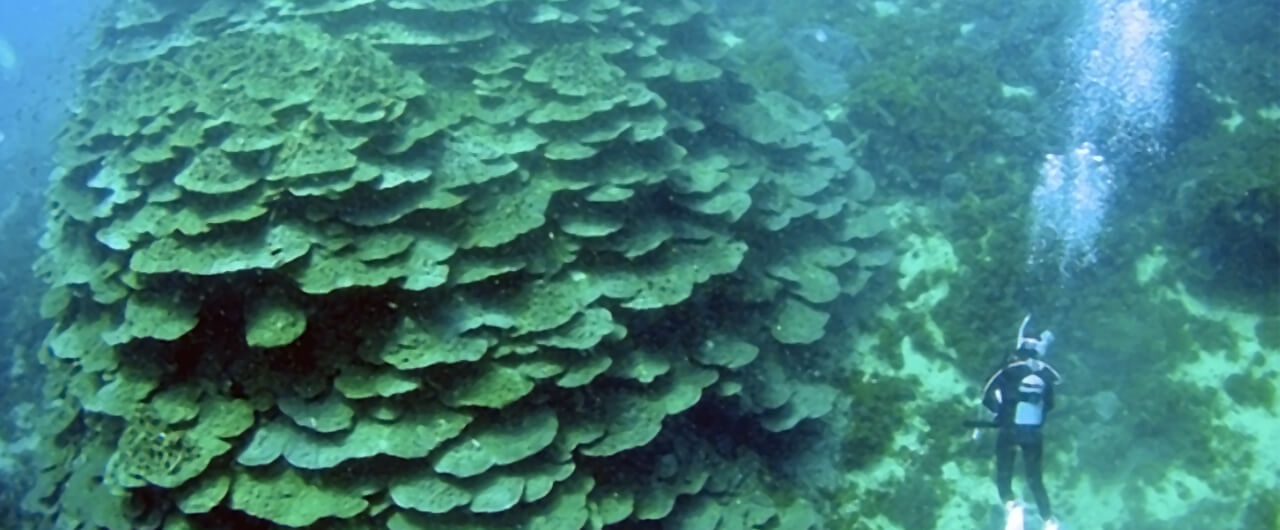
On the floor of the inner bay of Mugi-oshima Island is huge Porites lutea called “Millennium Coral” (Sen nen sango) and treasured by the local residents. Recently, the explosive growth of crown-of-thorns starfish has caused damage to the surrounding coral. That has triggered the conservation campaign by the whole region. In 2015, the activity was listed as a “Heritage for the Future” Project run by the National Federation of UNESCO Associations in Japan. We interviewed Shinpachiro Asaka of the “Council of Town Development along with Sen-nen Sango” about this activity.
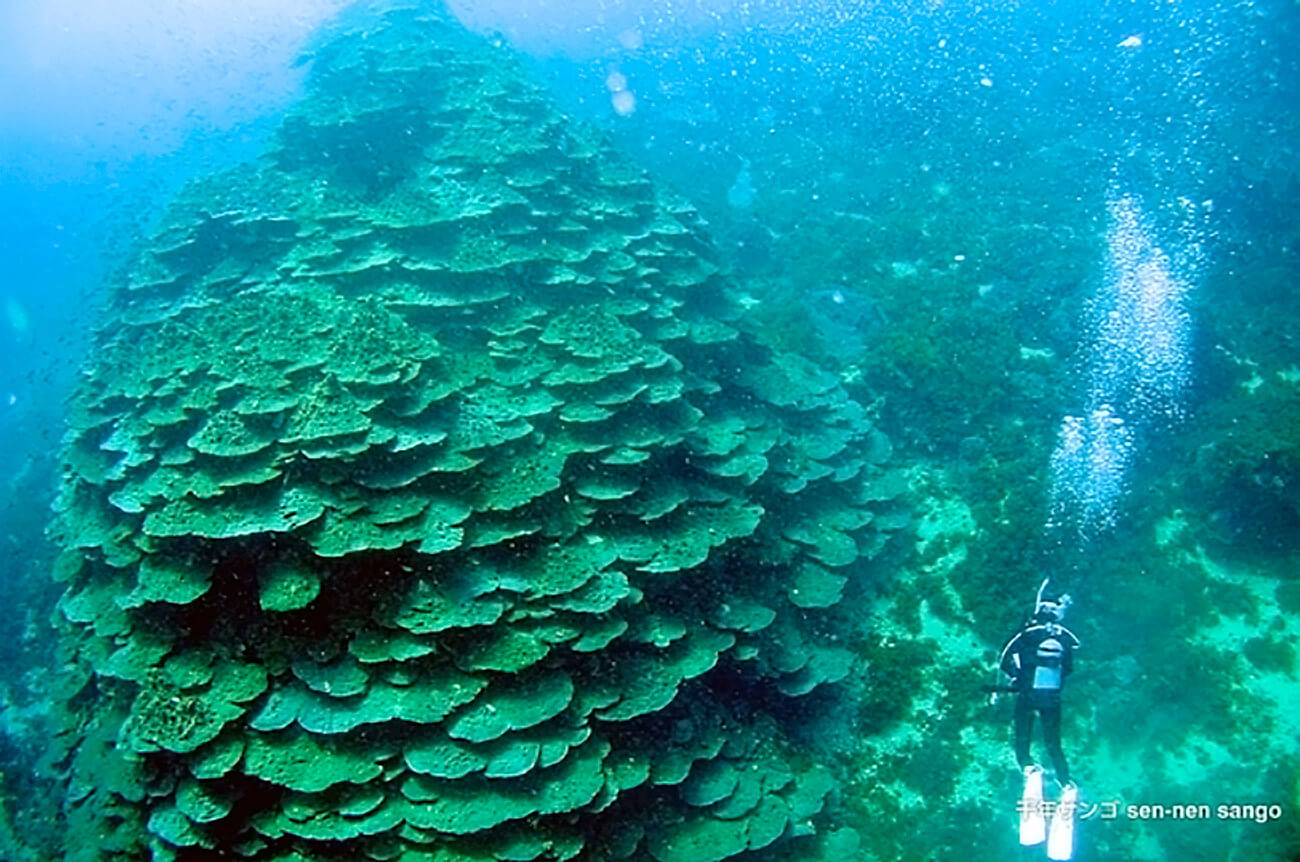
Photo: Provided by the Council of Town Development along with Sen-nen Sango
Millennium Coral in danger of feeding damage due to the explosive growth of crown-of-thorns starfish

Oshima is an uninhabited island 9.5 ㎞ around located about 4 ㎞ away off the coast of Mugi-cho. It has been known some time that there is huge coral there but nobody knew what exactly it was as it stood 23 m below the surface of the sea. In 2007, the community decided to use the coral as a symbol of the town development and measured the coral. The coral was 9 m high and 30 m around and it was the world largest level in size. The coral was estimated to be more than 1,000 years old from the average rate of growth of Porites lutea. We nicknamed it “Millennium Coral.” Next year, the local residents set up an organization for town development called “Mugi Sen-nen Sango Excavation Team” (hereinafter referred to as the excavation team).
In February 2009, a survey of the surrounding areas was conducted and more than 12 crown-of-thorns starfish were found only in 10 minutes. The coral was undamaged but more than 50% of nearby coral was eaten. The excavation team immediately formed a conservation team. In the next month, the Kaifu Nature Network, an NPO I belonged to, and volunteer divers began conservation. The activity was conducted seven times by November 2010 and approximately 1,600 crown-of-thorns starfish were caught. During a survey in June 2010, we found the growth of violet coral shell and other coral-eating snail shells. Since then, we have been regularly removing those shells in addition to the starfish.
What coral provides us is not limited to tourism resources. Coral absorbs carbon dioxide and releases oxygen* as well as it provides many living things with nutrients and habitat, which creates rich fishing grounds for humans. Coral also cleans the sea and serves as a natural breakwater. Protecting the Millennium Coral, we thought, meant handing down the rich natural environment to our next generations. In 2011, we set up the “Council of Town Development along with Sen-nen Sango” (hereinafter referred to as the council) aiming at joint conservation activities by the local residents, civic organizations and the municipality and revitalization of the town by advertising the activities.
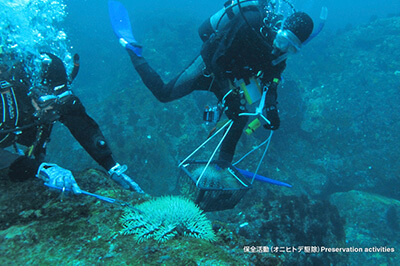
Removing crown-of-thorns starfish. As crown-of-thorns starfish is covered up with poisonous thorns, divers always work in pairs.
Photo: Provided by the Council of Town Development along with Sen-nen Sango.

Violet coral shell
Each shell is as small as 1.5 ㎝ to 3 ㎝ but the shells damage coral in a group.
Photo: Provided by the Council of Town Development along with Sen-nen Sango.
* Coral lets phytoplankton called zooxanthellae live symbiotically in its body. Coral absorbs carbon dioxide produced by the photosynthesis of the plankton and provides them with oxygen.
A rise in seawater temperature helped crown-of-thorns starfish survive winter.
The council has conducted conservation activities four to 12 times a year with the help of funds raised by its supporter program and volunteer divers recruited systematically in and outside the prefecture. We so far removed more than 3,200 crown-of-thorns starfish and over 35,000 coral-eating snail shells. As a result, the number of starfish caught a year was reduced from 1,187 at the start to 7 in 2014 and to 0 in 2016. The number of coral-eating snail shells was also reduced considerably to 200 last year. However, caution is still required. We will continue our activities on the shells as well as the starfish.

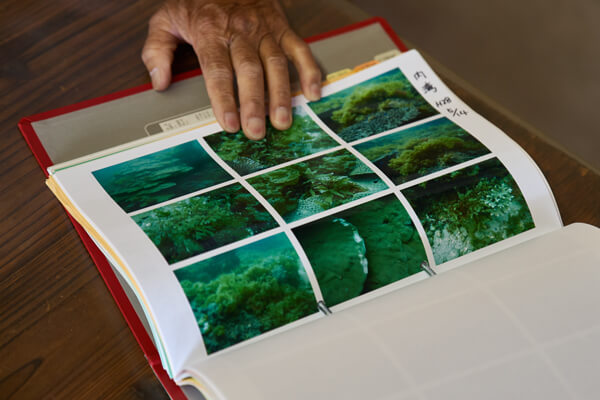
Average water temperatures of the Tokai sea by season (Statistic period: 1902 to 2016)
The rise rates in the Shikoku and Tokai seas are more than double the rise rates in average sea surface temperatures of the world and the North Pacific Ocean. The rise rate is the highest in winter.
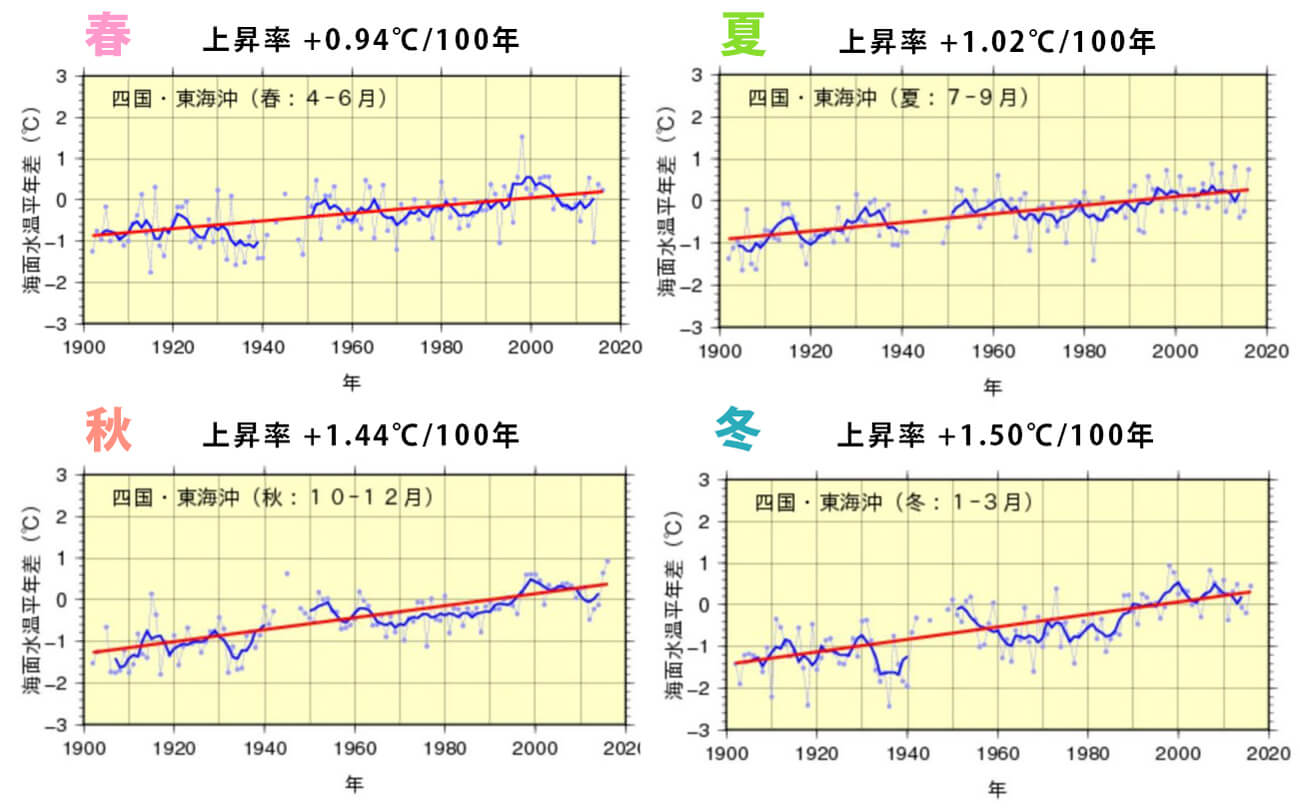
- Blue dots represent a difference between the temperature of each year and a normal value. Blue thick solid lines represent 5-year moving averages. Red thick solid lines represent long-term trends of change.
(Normal value = A 30-year average between 1981 and 2010)
Source: Japan Meteorological Agency http://www.data.jma.go.jp/kaiyou/data/shindan/a_1/japan_warm/cfig/warm_area.html?area=N
Handing down the “miracle heritage” to next generations
The reason why the Millennium Coral have lived 1,000 years is that it has grown in a quite special environment. First, as the bay of the Oshima island faces north, waves and winds from the south due to typhoons and storms are completely prevented. Second, warm seawater due to Japan Current and seawater rich in nutrients from the Kii Channel flow into the area and they create an environment suitable for growth of various creatures. Third, the island has not been developed and the environment has not been destructed. The Millennium Coral is “miracle heritage” produced under a perfect combination of favorable conditions.
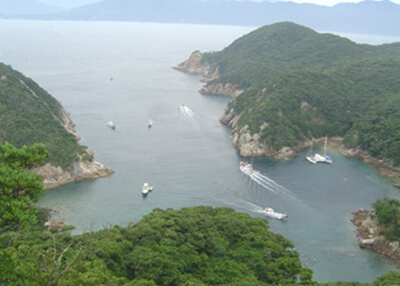
Inner bay of Mugi-oshima Island
Photo: Provided by the Council of Town Development along with Sen-nen Sango.
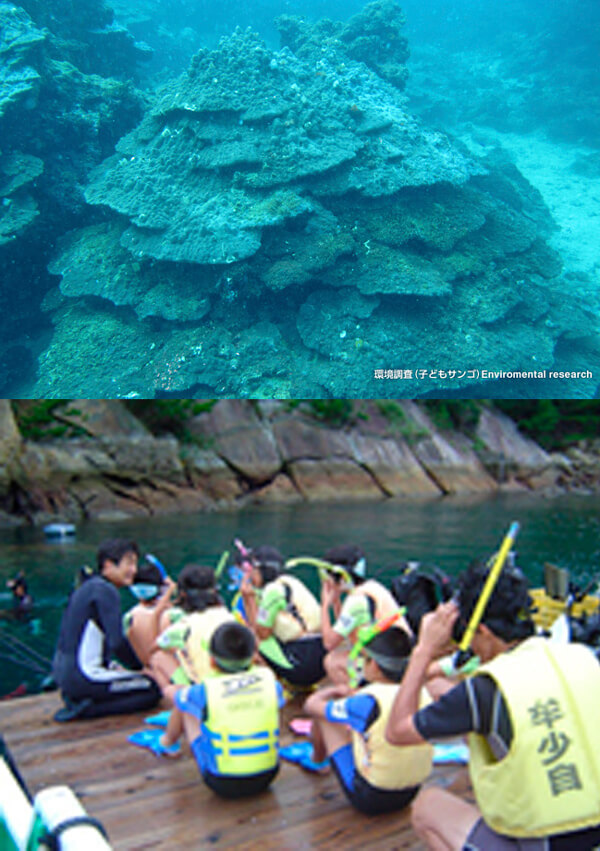
(Top) Young coral. It is said to take 100 years to grow to 1 m.
(Bottom) Training of local elementary school children as a diver
Photo: Provided by the Council of Town Development along with Sen-nen Sango.
Massive coral bleaching is occurring due to rising sea surface temperatures at home and abroad. The Millennium Coral is considered not to be affected as it is located deep in the sea. However, climate change can cause other impacts like the feeding damage. We have to remain alert and continue our activities.
In our recent survey on the environment surrounding the Millennium Coral, several young corals of around 1 m in height. We expect that continuously monitoring the growth of young corals will help find out the environment under the sea of the inner bay of Oshima and detect future changes in the environment. In the shallows near the Millennium Coral, many different creatures can be observed by snorkeling and we invite local children to see those creatures, hoping those children will join activities to protect the sea in the future.
(Posted on February 22, 2018)

